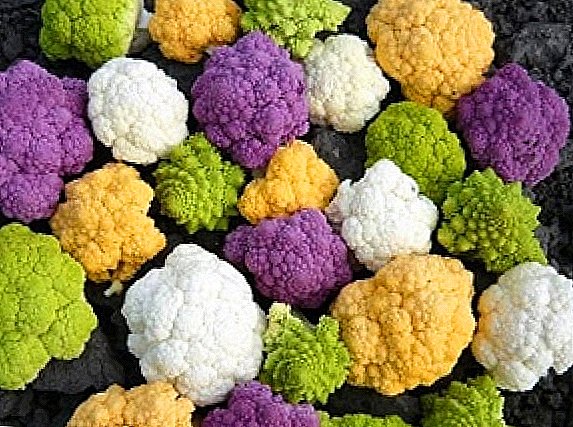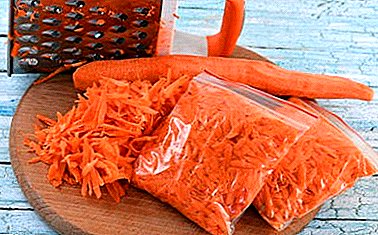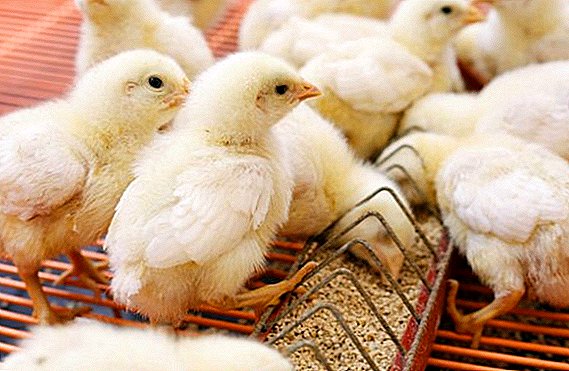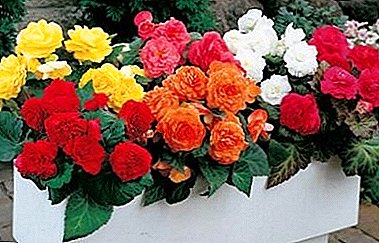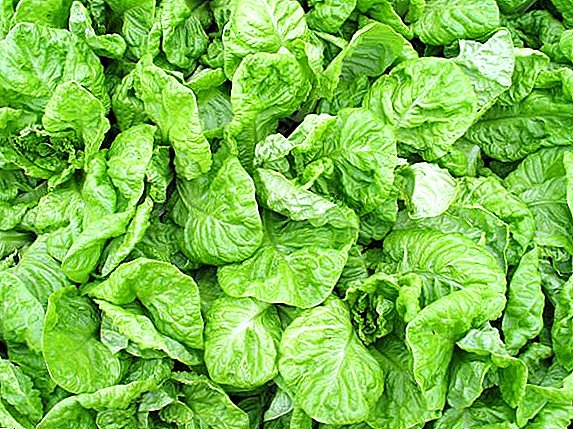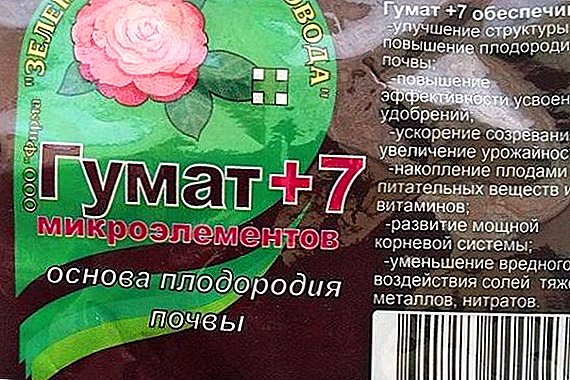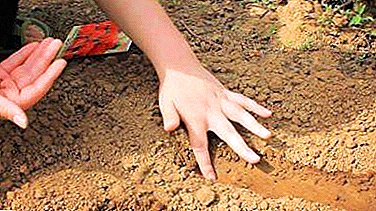 The drug "Agricola" farmers and gardeners use for top dressing seedlings in accordance with the instructions. We will figure out whether this fertilizer is as effective as it is safe and environmentally friendly, whether it should be used on healthy seedlings.
The drug "Agricola" farmers and gardeners use for top dressing seedlings in accordance with the instructions. We will figure out whether this fertilizer is as effective as it is safe and environmentally friendly, whether it should be used on healthy seedlings.
Let's talk about the application for fruit trees, shrubs and indoor plants.
Forms of release and description
Let's start with the release form of the fertilizer "Agricola" and its composition.
The composition of the fertilizer is presented the three most necessary elements which plants need for growth, development and fruiting:
- nitrogen (15%);
- phosphorus (21%);
- potassium (25%);
Liquid concentrate

It is a concentrated product that is sold with a measuring bottle. It is necessary to plant fertilizer with water in a ratio of 1: 100 or 1: 200.
Dry substrate
The dry substrate is represented by granules, which can be either embedded in the ground, or diluted in water and watered. This option is interesting because there is a packing of 1-1.5 kg each, and 50-100 g each. That is, if you need to fertilize several beds, then a small sachet is enough, and you don’t have to spend extra money.
Fertilizer sticks
Packing with chopsticks suitable for quick feeding of a small number of plants. In 1 pack of 20 sticks, which is enough for 20 plants. You need only stick a stick near the culture, and it, gradually enriching the soil, will do its job. The action of this form of release is more prolonged, but is only suitable for small plantings.
Important! The price of the sticks approximately corresponds to 0.5 kg of dry substrate.

Features and recommendations for the use of "Agricola"
"Agricola" as a fertilizer is used for almost all crops, but there are various options for the release, which corresponds to its own instructions. Therefore, further talk about the use of complex fertilizer for the garden.
Organic vegetables such as manure, chicken manure and compost can be used for vegetable seedlings.
For tomato, pepper, eggplant
For all the solanaceae, the third option of granules release is used: Agricola-3. Formula fertilizer replaces the necessary organic matter (compost / humus) to meet all the needs of seedlings.
The composition is slightly different from the "standard" in percentage main components:
- nitrogen - 13%;
- potassium - 20%;
- phosphorus - 20%.

Apply as follows: 2.5 g of the substance is diluted in 1 liter of water and watered seedlings. Apply "Agricola" should be no earlier than 15 days after picking up seedlings in open ground.
Important! Fertilizer need to be exclusively at the root.
For carrots, beets, radishes
For these root crops, Agricola-4 is used, which can be used from the moment of sowing. Carrot processing is carried out in 3 stages:
- 3 weeks after the appearance of the first shoots. We dilute 12.5 g of granules in 10 liters of water and produce watering or spraying. This amount is enough for 10-17 square meters. m of crops.
- It takes place 2-3 weeks after the first one. We breed 50 g in 10 l of water and process an area of 10-20 square meters. m
- 2 weeks after the second treatment. Dosage and area are identical (50 g / 1 l; 10-20 sq. M).
Important! For spraying, you need to use a larger amount of ready (diluted) fertilizer.

Fertilizer beet and radish involves only 2 stages:
- Immediately after thinning landings. 25 g of the active substance dissolve in 10 liters of water and process 10-20 square meters. m
- After 2 weeks we carry out an identical top dressing (25 g / 1 l; 10-20 sq. M).
For cabbage
For cabbage used granulated version "Agricola-1." Feeding seedlings spend 10-15 days after picking. 25 g of dry fertilizer dissolve in 10 liters of water. This amount is enough for 10-12.5 square meters. m. It should be understood that if you use fertilizer for spraying, then the treatment area is reduced, if it increases for root irrigation.
Further treatments are carried out until mid-August, increasing the dosage (compared to the seedling option) 4 times.
For onions, garlic
Used "Agricola-2" in the form of granules. Onions and garlic need to feed at the time of the formation of the onion or cloves. The dosage is as follows: 25 g diluted in 15 liters of water and process an area of 15-25 square meters. m (depending on the method of introduction). During cultivation, you need to spend no more than 3 dressings with an interval of 1 week. 
For cucumber, squash, zucchini and melons
"Agricola-5" is indispensable for feeding seedlings pumpkin crops. In addition to the three main elements, fertilizing contains magnesium oxide, which is necessary for these plants. For seedlings fertilizing close up in a week after transplantation in open ground. 25 g of granules are diluted in 10 liters of water. At 10-25 square meters. m consumes 10 liters of the mixture. During the season they spend 4-5 fertilizing with an interval of 10 days.
Important! Cucumber, zucchini, squash and zucchini can be fed both by spraying and infusion under the root.For the melon, foliar dressing is carried out 15 days after transferring the seedlings to the open ground. Before fruiting you need to make 2-3 supplements.
For vegetable seedlings
Separately, Agricola-6 was created for seedlings of vegetables and flowers. This is a more versatile fertilizer that is suitable for all young plants. 
A balanced composition aimed at removing nitrates from seedlings, contributes to the accumulation of necessary substances. Top dressing for seedlings allows you to get an environmentally friendly product, removing all heavy metals from plants in the early stages.
Feeding is carried out up to 5 times. Dosage - 25 g per 10 liters of water. Consumption - 1 liter per square. Fertilizer application interval - 7-10 days. More frequent feeding will lead to an overdose of NPK-groups in cultures. NPK groups are invaluable in growing plants, since nitrogen is used to build plant proteins, phosphorus serves as a universal source of energy and is used by the plant to form rhizomes, and potassium is needed for the synthesis and transportation of organic matter.
Did you know? In Europe, potatoes appeared only in the XYI century. At first it was grown in gardens as an ornamental plant and jam was made from its fruits, and it was eaten much later.
For berry crops
There is also a special formula for berry crops, which increases the yield by 30-40%.
This composition can be carried out root and foliar irrigation of strawberries, strawberries, currants, gooseberries and other berry crops. 
The formula has a high content of potassium, which enhances fruit formation and increases the size of the finished product without the accumulation of nitrates and heavy metals.
Apply for currants and gooseberries as follows: 25 g of granules diluted in 10 liters of water and water culture. The interval between treatments is 2 weeks. Spray consumption - 2 liters per bush, while watering - 2-8 liters per bush (depending on the size of the plant).
Important! Can be applied immediately after planting, after waiting 15 days.For strawberries, strawberries use the following feeding option: the solution remains unchanged (25 g / 10 l), as is the frequency of irrigation (once every 2 weeks), but per 1 square meter. m use no more than 3 liters of solution for root irrigation and about 3 liters per 100 squares when spraying.
Universal fertilizer
Since "Agricola" is universal fertilizer then it can be used for blooming flower beds, garden "highlights" or indoor plants. 
Agricola for flowering plants. Used to increase the number of peduncles and their size. Top dressing prolongs the flowering process, providing flowers with all the necessary elements. Dosage: 2.5 g of fertilizer diluted in 1 liter of water and irrigate under the root. Consumption of the solution as in the usual irrigation, the minimum interval between irrigation - 1 week.
Important! Suitable for almost all houseplants that are not hypersensitive to the NPK group.Separately created option "Agricola" specifically for indoor plants. Dosage and solution consumption are identical to Agricole for flowering plants. It should be noted that feeding from November to February is necessary no more than once a month.
Separately created versions of fertilizers for roses and orchids.
"Agricola" for roses has a ratio of the main elements of the NPK-group in the following proportion: 16:18:24. Top dressing not only makes flowering longer and more luxurious, but also prepares plants for wintering or a rest period. 
Method of application: in the spring, 20 g of pellets per square meter are buried in the ground. m. After feeding you need to conduct a deep loosening. For indoor specimens suitable sub-root making solution (2.5 g per 1 liter). Fertilize no more than 4 times a month. During the rest period (from November to February), make a solution once a month.
Did you know? Germany has the world's oldest rose. For more than 1000 years, it blooms every year at the Hildesheim Cathedral. The bush is almost on par with the roof of the building.Option for orchids involves strict adherence to the rate of application, as the plants are very capricious and can react negatively to an excess of basic elements. Apply as follows: 5 g "Agricola" diluted in 2 liters of water and produce watering every 1.5 weeks.

There is a fully universal version - "Agricola Vegeta", which is used for flowers and vegetable crops, as well as for berry trees and shrubs. The mixture is used for partial watering (diluted in a ratio of 1:10).
Yeast, mycorrhiza (fungus root) and wood ash can also be used as a top dressing for plants.
Benefits of using a "favorite plant drink"
Many manufacturers of various fertilizers write about unprecedented yields and fruits of such size that at least write down the Guinness Book of Records. However, most often such fertilizers are made from healthy vegetables or fruits. Consider how environmentally friendly "Agricola".
- "Agricola" does not contain in the composition of salts of heavy metals and chlorine, which is often used in other fertilizers. Their absence allows to obtain useful products.
- Top dressing does not allow nitrates to accumulate in vegetables and fruits, resulting in the purification of plants from harmful substances. That is, even if the site was contaminated with chemicals, the use of Agricola will help the plant get rid of poisons.
- Not only productivity, but also immunity of plants increases. Such an action is very useful when feeding perennials, as most other fertilizers "pull out all the juice," just to get a good harvest.
- Promotes the absorption of vitamins that affect taste and increase the benefits of finished products.
- "Agricola" is indispensable on salt marshes, dry and cold soils, as it allows plants to get all the necessary substances through the above-ground part (spraying).
- The cost of "Agricola" allows you to use it in the amount that is needed, without going into debt and without increasing the cost of the finished product.


